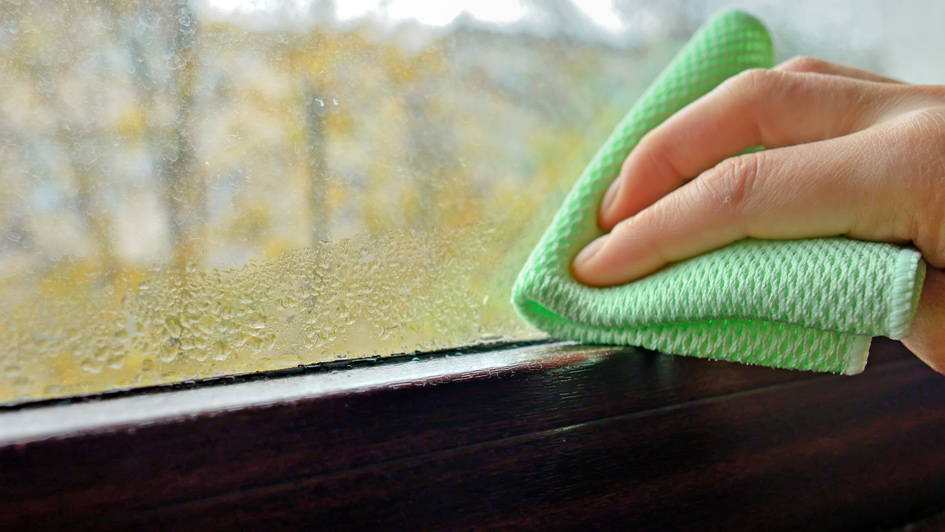
The windows in your home are a portal to the outdoors, a way to allow light in as you take in the view of your garden, yard or other surroundings. The last thing you need to see is a sweaty window coated in a coating of condensation.
Not only are windows covered in condensation unappealing, they also can be a symptom of a more substantial air-quality deficit within your home. Thankfully, there’s numerous things you can try to correct the problem.
What Produces Condensation on Windows
Condensation on the interior of windows is produced by the humid warm air throughout your home hitting the cooler surface of the windows. It’s especially prevalent around the winter when it’s much cooler outside than it is within your home.
Inside Moisture vs. In Between Panes
When talking about condensation, it’s crucial to know the contrast between moisture on the inside of your windows compared to moisture in between the windowpanes. One is an air-quality issue and the other is a window issue.
- Moisture on the inside of a window is produced from the warm moist air in your home collecting against the glass.
- Any moisture you notice between windowpanes is caused when the window seal fails and moisture seeps between the two panes of glass, and by then the window has to be repaired or replaced.
- Condensation in the windows isn’t a window problem and can instead be fixed by adjusting the humidity in your home. Numerous things generate humidity in a home, like showers, cooking, taking a bath or even breathing.
Why Sweating Windows Can Be Trouble
Even though you might think condensation on the inside of your windows is a cosmetic concern, it can be evidence your home has higher humidity. If this is in fact the case, water could also be condensing on window frames, cold walls or other surfaces. Even a thin film of water can help wood surfaces to mildew or rot over time, promoting the growth of mildew or mold.
How to Lower Humidity Throughout Your Home
Not to worry, because there are various options for removing moisture from the air throughout your home.
If you have a humidifier operating within your home – whether it be a small unit or a whole-house humidifier – lower it further so the humidity inside your home goes down.
If you don’t have a humidifier running and your home’s humidity level is high, look into installing a dehumidifier. While humidifiers adds moisture into your home so the air doesn’t dry out, a dehumidifier draws excess moisture out of the air.
Smaller, portable dehumidifiers can absorb the water from a single room. However, portable units require emptying out water trays and most often service a fairly small area. A whole-house dehumidifier will extract moisture from your entire home.
Whole-house dehumidifier systems are regulated by a humidistat, which allows you to establish a humidity level the same like you would choose a temperature on your thermostat. The unit will begin running immediately when the humidity level exceeds the set level. These systems collaborate with your home’s HVAC system, so you will want to contact qualified professionals for whole-house dehumidifier installation Magnolia.
Other Ways to Decrease Condensation on Windows
- Exhaust fans. Putting in exhaust fans around humidity hotspots such as the bathroom, laundry room or above the kitchen range can help by drawing the warm, humid air from these areas out of your home before it can elevate the humidity level in your home.
- Ceiling fans. Turning on ceiling fans can also keep air circulating inside the home so humid air doesn’t get stuck in one spot.
- Opening your window treatments. Throwing open the blinds or drapes can lower condensation by stopping the warm air from being stuck against the windowpane.
By decreasing humidity in your home and moving air throughout your home, you can take advantage of clear, moisture-free windows even in the middle of the winter.
